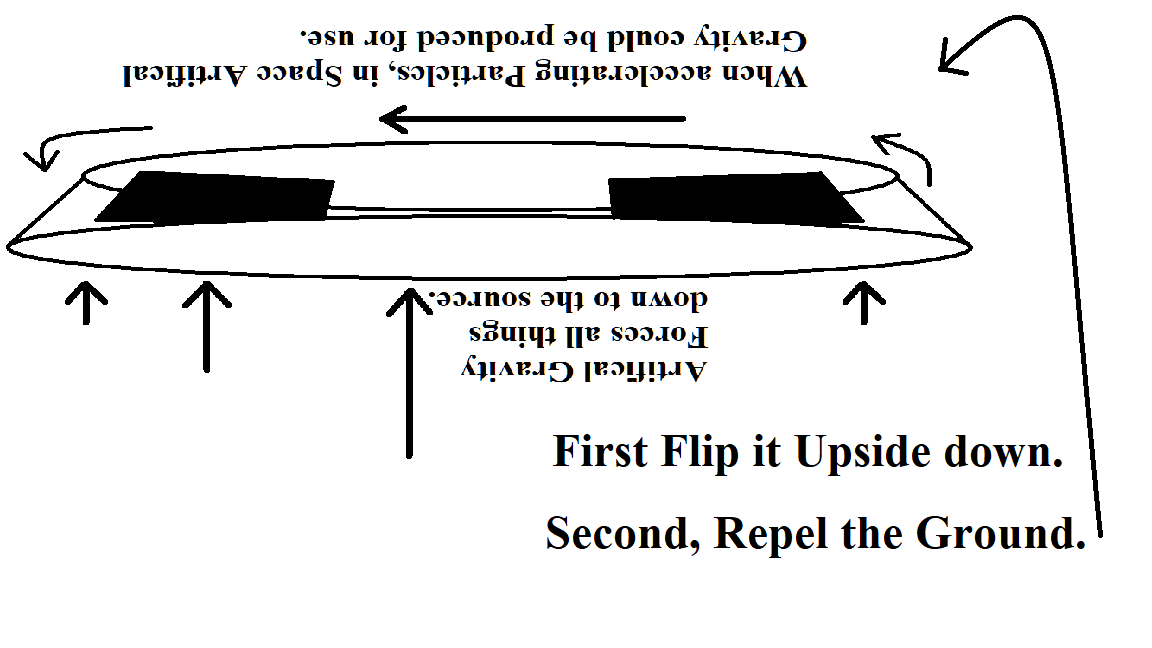
This is a two part Blog about Particle Accelerators and their use in Space over the next 50 Years.
Part II
In the last Blog I wrote that “it is very important that we always remember, first, how to use the scientific method, To recall that before Artificial Gravity is used in Space, that the way we produced the experiment was without it.” The Process must always highlight this years later. I as well did not explain “how” Artificial Gravity was made.
Now I did refer to a Cone. The Cone is developed when the Artificial Gravity is upright and moving. In this Blog, I want to turn the Cone upside down and repel.
When this happens, the object, the Particle Accelerator that I am using to make this happen, will, when built correctly, “Levitate”. This has been the goal of many scientific experiments. Where an object attached to a device, a particle accelerator would hold the device, Car, in a position above the ground.
An Image you might look at would be this one: flyingcar-monsieur-z-ds.jpg (1200×1714)
The success of this machine will not go outside of the Lab. There is a problem with something. I will not even get it out there. It was observed by others at one time that “this would be the way to make many objects move around and if everyone could do it, why not?”
Now that I suggested that it would work to make things levitate, let me take one step further. The Accelerator is too heavy to keep a Car or Automobile at the same level that it is now. That distance between the ground and the Car would be to low or to narrow. When I make this statement, I think of me, as the “one” who would go on to make the money after the remarkable product is on market.
When, I had some communications with other Engineers about this product, I had a response that “it should be lighter in weight and when introduced meet the challenges that the Group who was developing would need, met.”
So the solution was developed. We would go on to refer to it as “Polarized”. When electrified after it was attached to the machine, a car that will levitate. It would keep it a certain distance from the ground. If the weight was more, apply more electrical power. This will use more fuel. They are not specifications, but they are close.
Alright. What happened to my new device? My Particle Accelerator. It is not a disaster but the Cars could levitate down the highway just like the Cars before and respond the same way. We just need to take the wheels off.
Now, the Tin Can that was moving down the road is more Tin. Most likely more Aluminum and plastic. What about other objects like Aircraft or even, Spacecraft? Remember that the weight is very low, now that the heavy parts of the accelerator have been replaced with a light weight polarized form.
The Engineer jumped at the possibility that the object ready to go into space, was not attached to the Planet. They are ready for the Launch possibilities. The testing will be important, but they were light weight already.
The use of light weight materials help. Plastic, wire for seats, thin metal all make the next evolution possible but challenges are still there.
So here is to the future and the implementation of the Levitation process as it is a new opportunity to reduce the use of tires and disintegrating rubber as it filtered out of the use of materials we all have around us. The Environment could take a new step forward. Think of everything that we can do.
Will there be a Blog III about Particle Accelerators? Possibilities.
Blog II
